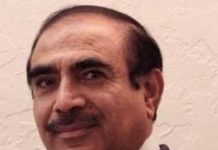By-elections in Punjab
The results of the Punjab by-elections have, predictably, altered the political landscape of the nation. Following the PTI’s victory, the PML-N led government at the federal level now faces an uncertain future as the party prepares to take back control of the nation’s most influential province. The loss of its bastion may have given the appearance that the current era was coming to an end, but the match is still in progress.
According to the federal government, it will finish its tenure. Given the slight discrepancy in votes between the two sides, it is also uncertain whether the chief ministerial election will happen without a hitch. The by-elections have increased the tension. The continuous political conflict might fundamentally destabilize the state as the possibility of an economic catastrophe looms in the background. Nobody knows what lies in store for them.
Even while what occurred on July 17 may have surprised some people, it was not wholly unexpected. For a party that was ejected from power in a parliamentary coup just a few months ago, it has undoubtedly been a resounding poll triumph. The PTI’s level of accomplishment is the most astounding. The PML-humiliation N’s is a reflection of the evolving political landscape in the country’s interior. For the Sharif party, it comes the time for judgement.
In addition to Imran Khan’s vigorous campaign and populist politics, there were a number of other variables that affected the outcome. The PTI’s ability to mobilize young people made the difference, as seen by the high voter turnout, a rarity in by-elections. The PML-N was torn apart by internal conflicts, while the PTI appeared to be more organized.The PML-N was torn apart by internal conflicts, while the PTI appeared to be more organized. The party, which was primarily a family business, shamefully fell short of the expectations of the younger people seeking change.
The ruling party also suffered from the effect of incumbency. The government was cited as the cause of the excessive inflation, therefore the deck was set against it. In the past three months since the change of government, there has been a significant movement in the political climate of the nation.
The power game has started again, and this time it will probably be more brutal. Imran Khan’s political fortunes changed as a result of that as well. He became a political martyr since his government was overthrown prior to the end of its term. It may not be a unique occurrence in Pakistani politics, where it is uncommon for any elected leader to serve out their full term, but unlike earlier deposed leaders, Imran Khan fought back with a ferocity never before witnessed.
Despite the fact that he was removed from office by a democratic process, even if this was contentious at the time, he based his own campaign on a phony conspiracy notion. He claimed that a conspiracy including the US, opposition politicians, and the security apparatus was to blame for the overthrow of his government. His use of demagoguery was very successful. He was effective in leveraging the widespread anti-American and xenophobic nationalist emotions to win over the population.
Khan’s widespread popularity has not just grown as a result of his claim to a conspiracy; it has also been boosted by the outrage generated by his removal from office a year before the end of his mandate. His support base has grown especially among the urban middle classes as a result. His story about the restoration of a “tainted” political leadership to power stoked the populace’s concerns. After the no-confidence motion was filed against him, he was on the streets within days.
He turned the tables on the new coalition administration after earlier being the target of public outrage over the rising inflation and economic downturn. The unabated rise in living expenses and some of the difficult but necessary measures implemented by the Shehbaz Sharif administration, such as raising fuel prices, discouraged voters from the ruling party.
It’s interesting to note that the previous prime minister has criticized the security apparatus, charging army commanders with conspiring with the ‘conspirators’. Ironically, the same group of people had supported Khan’s administration for more than three years. Despite the fact that he amassed a sizable following among retired officers, many of whom were former generals, he is now portraying himself as an anti-establishment leader.
With a deadly mix of nationalism and religion, Khan relentlessly pushed his right-wing populist agenda, leaving his competitors without a counter narrative to the PTI’s politics. It has been challenging for the PML-N to inspire those seeking change because of the concentration of political power within the Sharif family. It is difficult to imagine how the father-and-son combo running things at the center and in Punjab, with the senior Sharif making decisions from London, could motivate young people or win the support of the urban educated middle class.
Even while the PML-N is still a strong political force in the province, its frailties have been revealed by the most recent by-elections. More than anywhere else, Punjab’s politics have been touched by the social and economic developments that have taken place throughout time. One of the quickest urbanization processes in the world is taking place in the province that is home to more than half the population of the nation. This was also seen in these by-elections, as the PTI gained support from both urban and rural voters.
After the crucial by-elections, a new phase of the power struggle has started that is probably going to be more brutal. Imran Khan’s confrontational habits appear to have gotten worse after his election, not better, instead of sobering him up. He now wants to set the terms of the elections. He maintains that the Election Commission is biased despite his resounding victory.
Elections are undoubtedly the only option to break the political impasse, but Imran Khan’s divisive and autocratic style continues to stand in the way of any genuine political solution. What is most concerning is how much worse the economic crisis has gotten as a result of the political unrest. The nation’s ability to repay its foreign loans is currently seriously in jeopardy. The scenario is rather bleak.





